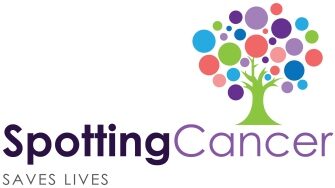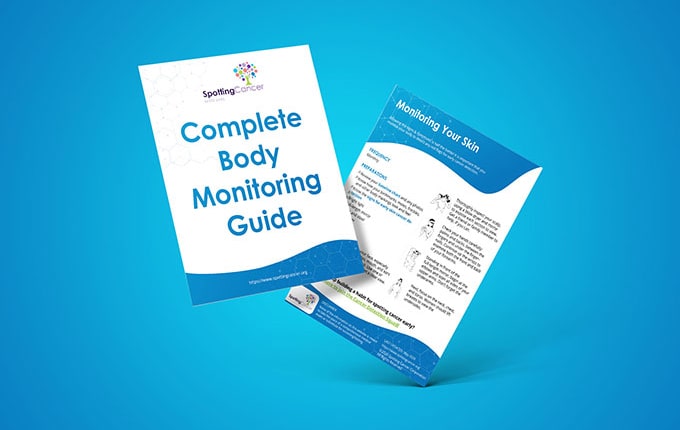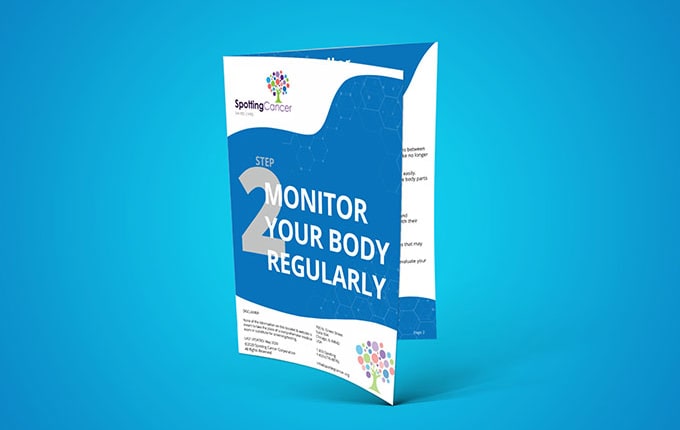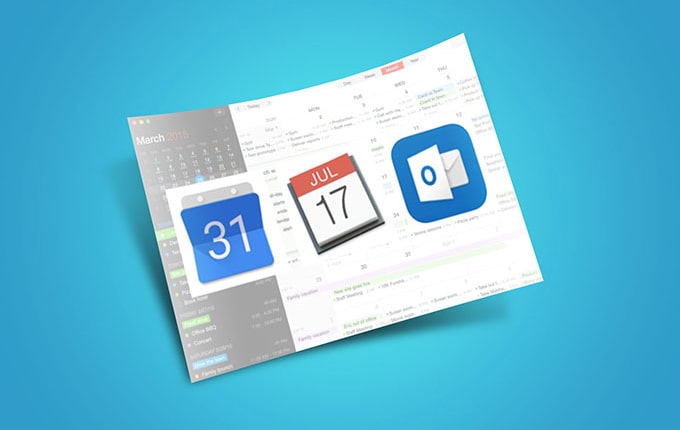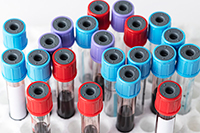Step 2: Monitor Your Body
Frequency
- Monthly
Preparation
- Review your baseline chart and any photos
- Know how your birthmarks, moles, freckles, and other body markings look and feel
- Know the signs for early skin cancer detection
- Bright light
- Full-length mirror
- Chair and stool
- Hair dryer
- Camera
Download Our Spot and Survive Guides Free Now!
Learn the signs to potentially save yours and your family’s life.
Examination

Examine your face, especially your nose, lips, mouth, and ears – front and back. Use one or both mirrors to get a clear view.

Thoroughly inspect your scalp, using a blow dryer and mirror to expose each section to view. Get a friend or family member to help, if you can.

Check your hands carefully: palms and backs, between the fingers and under the fingernails. Continue up the wrists to examine both the front and back of your forearms.

Standing in front of the full-length mirror, begin at the elbows and scan all sides of your upper arms. Don’t forget the underarms.
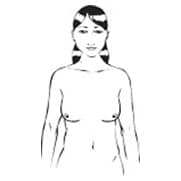
Next, focus on the neck, chest, and torso. Women should lift breasts to view the undersides.
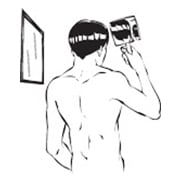
With your back to the full-length mirror, use the hand mirror to inspect the back of your neck, shoulders, upper back and any part of the back of your upper arms you could not view in step 4.
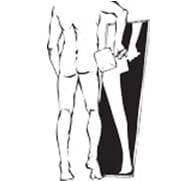
Still using both mirrors, scan your lower back, buttocks, and backs of both legs.
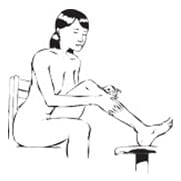
Sit down; prop each leg in turn on the other stool or chair. Use the hand mirror to examine the genitals. Check the front and sides of both legs, thigh to shin, ankles, tops of feet, between toes and under toenails. Examine soles of the feet and heels.
or
Spot Cancer
Get reminder emails, tips, and resources to develop your spotting cancer habit when you join the Cancer Detection Squad

Take Action
Update baseline chart
Take photos of any suspected changes that have occurred and compare to previous photos.
If you notice any changes, consider them “red flags”. They do not mean you have cancer. However, contact your dermatologist or medical team for a professional evaluation.
you can
when you download and use our guides
Get the Skin Monitoring Guide
Get the Complete Body Monitoring Guide
Download the Complete Body Monitoring Guide to keep track of your body’s changes. The guide includes interactive charts and body monitoring guidelines.
Save a Body Monitoring and Screening & Testing schedule
Regular monitoring and testing is a life-saving habit. Save a Body Monitoring and Screening & Testing schedule to your Google Calendar or iCalendar to stay on track!
